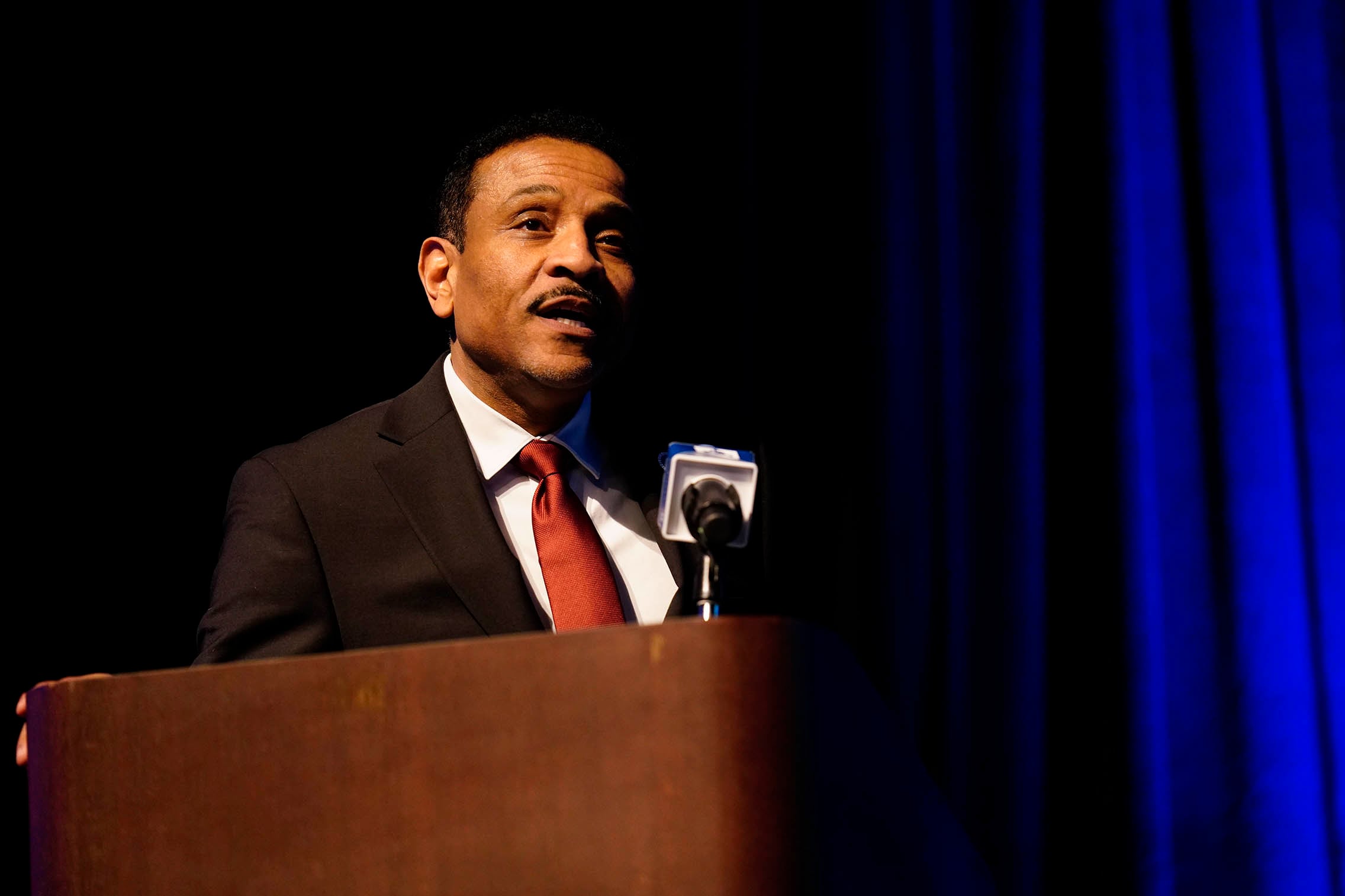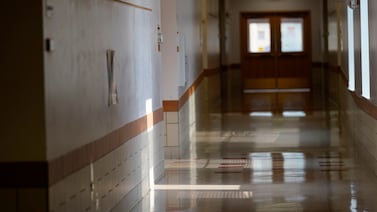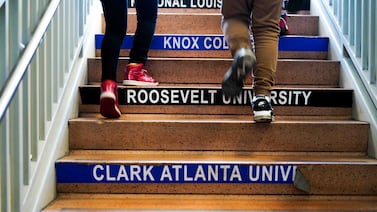Sign up for Chalkbeat Philadelphia’s free newsletter to keep up with the city’s public school system.
Tony Watlington is starting his third year as Philadelphia superintendent of schools — but he is not above going back into the classroom himself.
In discussing the district’s persistent teacher shortage, Watlington acknowledged the gravity of the situation, and that some central office administrators may find themselves deployed to classrooms this year, at least on the first day of school.
Which, he said, wouldn’t be all bad.
“If Tony Watlington showed up to teach a few social studies classes, I think they would still get some great instruction,” he said as part of a wide-ranging interview with Chalkbeat about his plans and challenges for the upcoming school year.
Watlington assumed leadership of the country’s eighth-largest school district in June 2022. He has prioritized improving academic achievement, making the district’s “customer service” — as he put it — more welcoming and helpful, and increasing the presence of district officials in neighborhoods to build partnerships with families.
There’s been notable progress on his watch. Some test scores have improved. More students attend school regularly. And the four-year high school graduation rate has increased, albeit gradually. He likes to say that Philadelphia is on its way to being “the fastest improving urban school district in the country,” citing a study from this year.
At the same time, some key high school academic indicators are stagnant or declining, and a large share of students still miss a lot of school. Perhaps most crucially, the district has been consistently unable to hire enough teachers.
Watlington noted that as of mid-August, its “fill rate” for all teacher positions is 95%, which means the district still has more than 400 vacancies. That translates to some 14,000 students lacking a permanent teacher when they return to school, a number that by itself is big enough to rank among the 10 largest districts in Pennsylvania. These issues are dominant as the district and teachers union prepare to negotiate a new contract.
Ahead of the new school year, Watlington shared his hopes and concerns for what’s ahead.
This interview has been edited for length and clarity.
Can you update us on the issue of teacher vacancies?
The reason we’re not at 100% is in part because there is a decline in the number of people who are choosing to get a teaching degree in Pennsylvania. So generally, when people ask me, have you filled all the positions, sometimes we’ll say, I think you’re asking the wrong question, because we need to make sure that we’re recruiting and hiring people who are prepared to do this job.
We’ll be deploying individuals from district headquarters to provide some help with classroom coverages as we continue to hire.
That still means that many students will start the year without a regular, long-term stable teacher.
I have a teaching license. I may have to suit up and go teach a few myself.
The biggest shortages are in science, technology, engineering, and math, foreign language, and special education teachers. Those are some of the toughest areas to fill, partly because you can make more money in the private sector. That’s why we have to pay our teachers more.
If you’re a teacher in the South or the Midwest, and you have the credentials, come on to Pennsylvania. We welcome you with open arms and not have to test and go through all these hoops. I thought it was the craziest thing when I came here as superintendent, and I had to sit for a three-hour test with a camera on, watching me the entire time.
We are investing resources and getting more of our paraprofessionals through a degree program at no cost.
The district is also starting a new English Language Arts curriculum this year. Are teachers adequately trained?
For a district of our size to launch a new curriculum in math in kindergarten through 12th grade in all district schools last year, and to then launch an English language arts and reading curriculum for the next year, is somewhat unprecedented. But it’s the right thing to do. Eighty-three percent of our teachers last year reported that they felt competent to teach the new math curriculum, but what they told us is that they needed more time.
We did a much better job this year of supporting our teachers to be able to teach the new English curriculum. And I’m really proud of our teachers, because they understand that we’ve got to make sure that poor kids who move around the city don’t have to learn different curricula. Either we are going to be a system of schools or we’re going to be one united school system.
What else are you planning to focus on this year?
Number one, we are going to focus on accelerating achievement. We’re also teaching our teachers how to engage students more effectively.
Number two, we’re going to focus on improving our customer and constituent service. We will expand the two-way communication system that I piloted in my office all last year.
The third thing we are going to focus on is building stronger partnership with our families, and we’ll do that by relocating the district assistant superintendent offices to 15 areas throughout the city, many housed in schools. If you’ve got a concern about the lunch menu, transportation, academics, or you feel like your child’s paper wasn’t graded appropriately, you’ve got one place in your community to go straight to the person who supervises those schools.
And in addition to that, we’re going to do a good job of executing Mayor Cherelle Parker’s priority for extended day, extended year pilot schools.
Could you explain a little more about how that kind of responsiveness translates into better achievement for kids?
When I give you better customer service as a parent you’re more likely to talk to the teacher, to talk to the principal, to read my communications. You’re more likely to feel like you’ve been heard, and when you feel like you’ve been heard homes and schools can work as partners in children’s learning.
We’re going to lead in improving those relationships, and we’re going to win our parents and families over because they see that we care about their children and about them.
We’ll be providing training on little things, how to say “good morning,” “thank you,” “it’s been a pleasure to work with you today.”
Tell me more about plans for extended-day and year-round school.
In year one, we have not made any changes to teachers’ or principals’ daily schedules. The before- and after-school programming is being run by outside providers, in partnership with the city and district.
Attendance data is going to be so important for us to see which parents participate and which don’t. We’ll be surveying parents about what they like, what they don’t like. We’ll also be getting feedback from the schools in terms of what’s working or not.
We know that it will be a help for kids who will not be on the streets, instead being with competent, caring adults in the early morning or late afternoons. Enrichment will be available during vacation breaks.
While you have seen some positive trends under your tenure in achievement and attendance, it is still true that only about a third of third through eighth graders are reading on grade level, and less than a fifth have grade-level math skills. Have you set improvement targets for the coming year?
We’re talking with principals and we will begin setting academic targets for the district, for each learning network and for each school, something that’s not been done in recent history to my knowledge.
Even though we were among the fastest-improving school districts post-COVID in third through eighth grade reading and math, we didn’t do well in the high schools. In the 2023 school year, in biology and Algebra 1, we actually went in the wrong direction.
We’ve got to continue to invest in third through eighth grade so that we’re sending stronger students to our high schools. We’ve got to continue to support and invest in our teachers in the high schools so that they have the best-in-class curriculum. And then we need to help our teachers to be able to fully understand the curriculum standards and how to teach them, and also how to teach kids in a way that engages kids in the learning. That’s a hard thing to do.
Violence in the city overall has been trending down, but there have been high-profile incidents like the shooting of eight Northeast High school students at a bus stop. What is the district doing to combat violence?
Attendance really does matter. Kids who come to school at least 90% of the year, and who are making sufficient progress in their academic classes, are less likely to be victims or perpetrators of violence. It’s why we’re so focused on it.
In 2022-23 in the district, just 57% of students attended school 90% of the time. Last year it went up to 60%.
Part of our underachievement is explained by: Our kids just not being in school enough. Kids learn more in brick and mortar schools with a teacher than they do on a computer. Every year that we improve, we have to say, “good job, schools,” “good job, young scholars.” Our kids need to hear more positive messages from us adults in the city, and we can do it.
Dale Mezzacappa is a senior writer for Chalkbeat Philadelphia, where she covers K-12 schools and early childhood education in Philadelphia. Contact Dale at dmezzacappa@chalkbeat.org.






